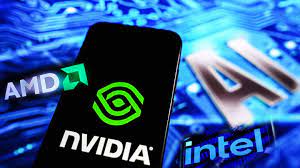As an industry leader in AI and graphics technology, NVIDIA sets high standards to identify talent with exceptional technical and comprehensive capabilities. ProgramHelp has assisted numerous students insecuring NVIDIA offers, and today, we invite one of our successful candidates to break down the key insights of NVIDIA interview process, core questiontypes, and classic programming problems.

NVIDIA Interview Process
Resume Screening
NVIDIA’s screening focuses on educational background, project experience, and job fit. For technical roles, emphasis is placed onalgorithm skills and GPU-related experience, while non-technical roles prioritize business achievements.
Written Test (for Some Roles)
Technical roles may include a written test covering algorithms, computer fundamentals, and GPU architecture. Question types range from LeetCodemedium-difficulty algorithm problems to professional short-answer questions.
Interview Stages
- First Round (Technical Interview):
- Technical roles: In-depth probing of project details, requiring on-the-spot coding. Questions may involve GPU acceleration, deep learning, etc.
- Non-technical roles: Assessment of business understanding and case analysis (e.g., marketing strategies).
- Second Round (Cross-Functional Interview):
- Technical roles: Challenges in complex system design or discussions on cutting-edge technologies.
- Non-technical roles: Evaluation of cross-departmental collaboration skills through scenario-based questions.
- HR Interview:
- Discussions on career planning, cultural fit, and compensation expectations.
NVIDIA Interview Question Types
- Technical Roles: Algorithm coding, GPU/CUDA principles, system design, and project-specific technical details.
- Non-Technical Roles: Business strategies, case analysis, and cross-team collaboration simulations.
NVIDIA Interview Real Programming Questions
Question 1: GPU Parallel Matrix Multiplication
Problem Statement: Use CUDA to implement parallel matrix multiplication. Given two matrices A (M×K) and B (K×N), output the product matrix C (M×N). Optimize thread block/thread allocation and memory access efficiency.
Example Input:
A = [[1, 2], [3, 4]]
B = [[5, 6], [7, 8]] Output:
[[19, 22], [43, 50]] Question 2: Image Edge Detection Acceleration
Problem Statement: Accelerate the Canny edge detection algorithm using CUDA on NVIDIA GPUs. Input a grayscale image matrix and output an edge image (0 or 1 indicating non-edge/edge pixels).
Example Input:
image = [[10, 20, 30], [40, 50, 60], [70, 80, 90]] Output:
[[0, 1, 0], [1, 0, 1], [0, 1, 0]] Question 3: Video Frame Classification Optimization
Problem Statement: Use PyTorch and NVIDIA GPUs to build a real-time classification model for a batch of video frames (3D matrix [frames, height, width]). The model must process 100 frames within 1 second; optimize code if timeout occurs.
Example Input:
video_frames = torch.randn(100, 224, 224) # Simulated 100 frames Output:
Classification result list (e.g., [0, 1, 0, ...]) Ready to Excel at NVIDIA Interviews?
ProgramHelp is a professional technical interview coaching team that has helped hundreds of students land roles at top companies like NVIDIA, Google, and Meta.Whether you need remote interview assistance or interview proxy services, we ensure personalized support.
Take the first step today—contact us to start your journey toward success at NVIDIA!

